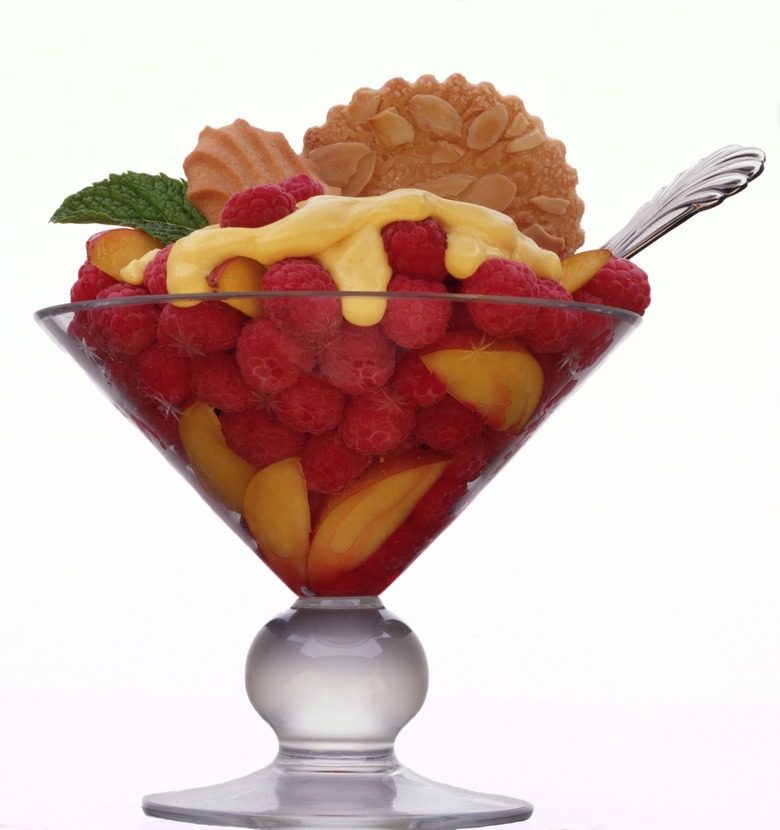Types Of Nectarines
Nectarines are like peaches without the fuzz. Nectarines are smaller than peaches with more aroma and red color on the fruit's surface. These fruits are enjoyed fresh, used for jams and jellies or canned. Nectarines come in yellow and white varieties. Most nectarines grown for consumption are yellow.
Types of Nectarines
Both nectarines and peaches come in three main varieties. In clingstone varieties, the fruit clings to the inner stone. In freestone varieties, the fruit falls easily away from the stone. In semifreestones, the fruit is fairly easy to remove from the stone. Freestone types have soft flesh and are common for eating or freezing, while clingstone varieties have firmer fresh and are good for cooking and canning.
- Nectarines are like peaches without the fuzz.
- In semifreestones, the fruit is fairly easy to remove from the stone.
Yellow vs. White Nectarines
The main difference between yellow and white nectarines is the amount of acid they contain. Both nectarine types are edible and delicious. White nectarines are lower in acid and slightly sweeter than are yellow varieties. Most varieties have no tartness at all. Those who want a fruit with a tangy flavor usually prefer yellow nectarines.
Dwarf Varieties
Nectarine trees come in a variety of sizes. For homeowners with limited growing space, dwarf nectarine trees are a good choice. While other nectarine trees can grow to 20 feet or higher, dwarf varieties can grow in small spaces and attain a height of 4 to 6 feet. Miniature nectarine trees grow in pots and produce regular sized fruit on small trees. Semidwarf varieties usually grow to 12 to 15 feet tall.
- The main difference between yellow and white nectarines is the amount of acid they contain.
- White nectarines are lower in acid and slightly sweeter than are yellow varieties.
Considerations
Nectarine trees are self-pollinating so it is only necessary to plant one tree. Planting trees of different cultivars extends the growing season, according to Ohio State University Extension. Planting more than one type of tree also results in increased fruit production. When choosing trees for planting, 1-year-old trees with a good root system and are about 3 to 4 feet high are easily transplanted and can grow into healthy trees. Most nectarine trees do best in warm climates with long summers. Different tree types have different chilling requirements. This refers to the amount of cold weather required during the winter in for the tree to properly bud. Successfully growing nectarines depends on choosing varieties adapted to local growing conditions.
- Nectarine trees are self-pollinating so it is only necessary to plant one tree.
- When choosing trees for planting, 1-year-old trees with a good root system and are about 3 to 4 feet high are easily transplanted and can grow into healthy trees.
